收集整理了一份《2024年最新Python全套学习资料》免费送给大家,初衷也很简单,就是希望能够帮助到想自学提升又不知道该从何学起的朋友。
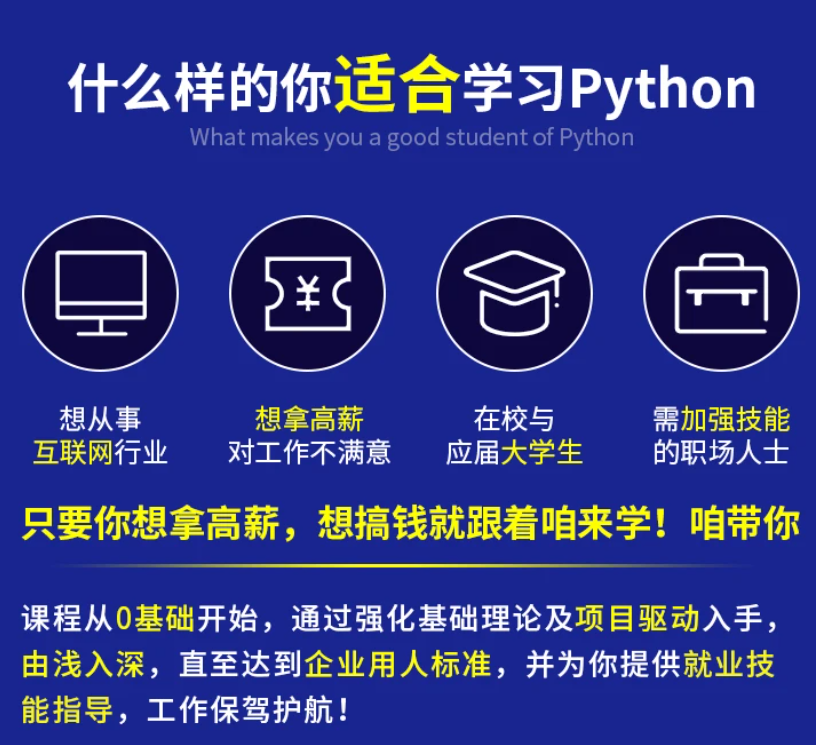
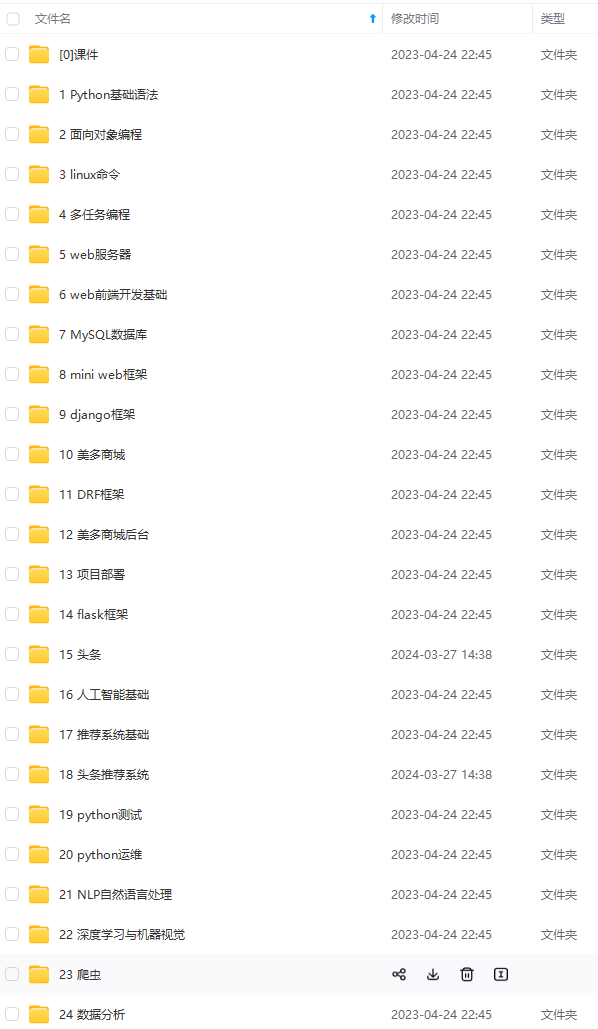
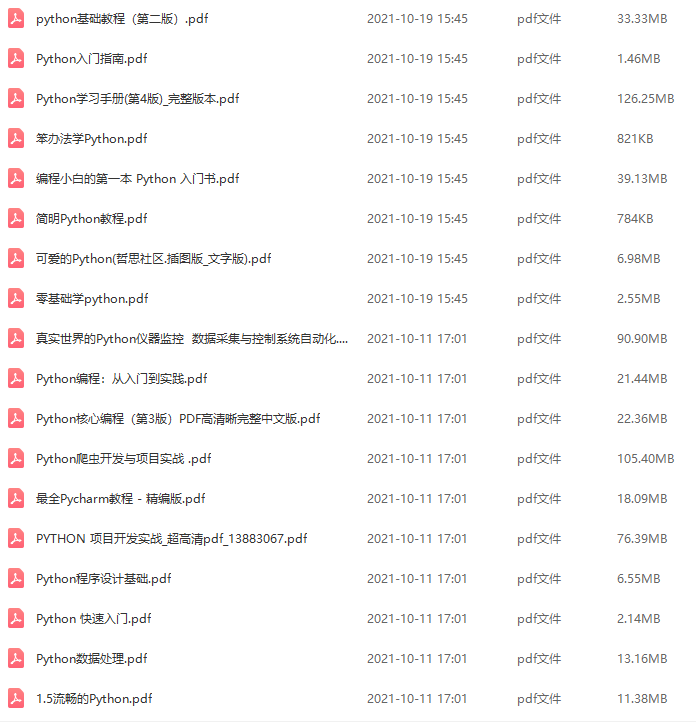
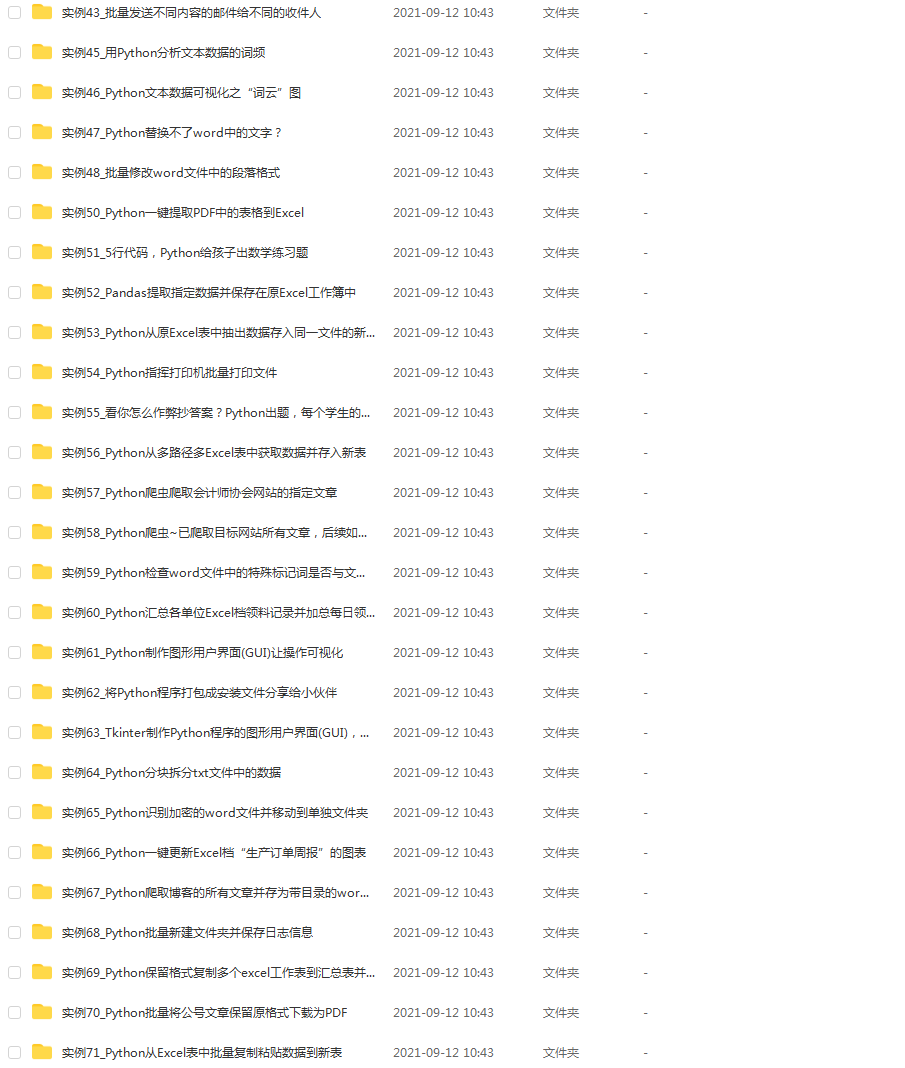
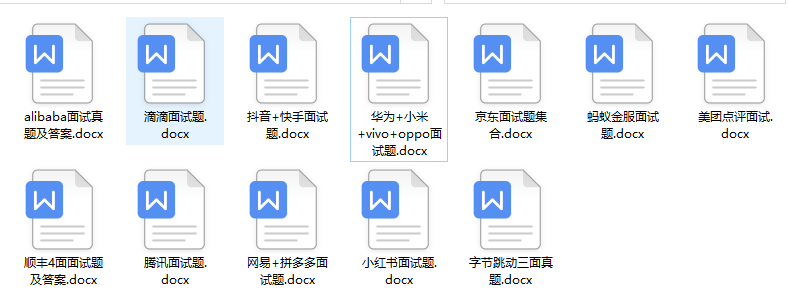

既有适合小白学习的零基础资料,也有适合3年以上经验的小伙伴深入学习提升的进阶课程,涵盖了95%以上Python知识点,真正体系化!
由于文件比较多,这里只是将部分目录截图出来
如果你需要这些资料,可以添加V无偿获取:hxbc188 (备注666)

正文
from tensorflow.keras.layers import MaxPooling2D
from tensorflow.keras.layers import Activation
from tensorflow.keras.layers import Flatten
from tensorflow.keras.layers import Dropout
from tensorflow.keras.layers import Dense
from tensorflow.keras import backend as K
class LivenessNet:
@staticmethod
def build(width, height, depth, classes):
initialize the model along with the input shape to be
“channels last” and the channels dimension itself
model = Sequential()
inputShape = (height, width, depth)
chanDim = -1
if we are using “channels first”, update the input shape
and channels dimension
if K.image_data_format() == “channels_first”:
inputShape = (depth, height, width)
chanDim = 1
导入包。 要深入了解这些层和功能中的每一个,请务必参考使用 Python 进行计算机视觉深度学习。
定义 LivenessNet 类。它包含一个静态方法 build。 build 方法接受四个参数:
-
width :图像/体积的宽度。
-
height :图像有多高。
-
depth :图像的通道数(在本例中为 3,因为我们将使用 RGB 图像)。
-
classes:类别的数量。 我们总共有两个类:“real”和“fake”。
初始化模型。 定义inputShape ,而通道排序。 让我们开始向我们的 CNN 添加层:
first CONV => RELU => CONV => RELU => POOL layer set
model.add(Conv2D(16, (3, 3), padding=“same”,
input_shape=inputShape))
model.add(Activation(“relu”))
model.add(BatchNormalization(axis=chanDim))
model.add(Conv2D(16, (3, 3), padding=“same”))
model.add(Activation(“relu”))
model.add(BatchNormalization(axis=chanDim))
model.add(MaxPooling2D(pool_size=(2, 2)))
model.add(Dropout(0.25))
second CONV => RELU => CONV => RELU => POOL layer set
model.add(Conv2D(32, (3, 3), padding=“same”))
model.add(Activation(“relu”))
model.add(BatchNormalization(axis=chanDim))
model.add(Conv2D(32, (3, 3), padding=“same”))
model.add(Activation(“relu”))
model.add(BatchNormalization(axis=chanDim))
model.add(MaxPooling2D(pool_size=(2, 2)))
model.add(Dropout(0.25))
CNN网络类似VGG。 它非常浅,只有几个学习过的过滤器。 理想情况下,我们不需要深度网络来区分真实和欺骗的面孔。
第一个 CONV => RELU => CONV => RELU => POOL 层,其中还添加了批量归一化和 dropout。 第二个 CONV => RELU => CONV => RELU => POOL 层。 最后,我们将添加我们的 FC => RELU 层:
first (and only) set of FC => RELU layers
model.add(Flatten())
model.add(Dense(64))
model.add(Activation(“relu”))
model.add(BatchNormalization())
model.add(Dropout(0.5))
softmax classifier
model.add(Dense(classes))
model.add(Activation(“softmax”))
return the constructed network architecture
return model
全连接层和 ReLU 激活层组成,带有 softmax 分类器头。
模型返回。
======================================================================
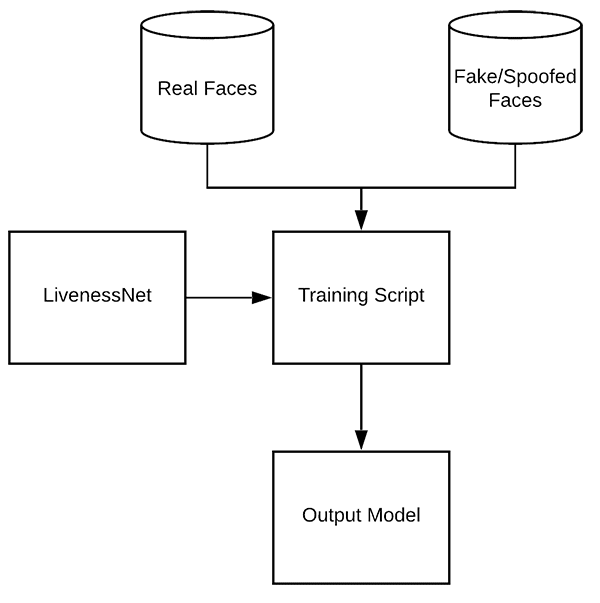
鉴于我们的真实/欺骗图像数据集以及 LivenessNet 的实现,我们现在准备训练网络。 打开 train.py 文件并插入以下代码:
set the matplotlib backend so figures can be saved in the background
import matplotlib
matplotlib.use(“Agg”)
import the necessary packages
from pyimagesearch.livenessnet import LivenessNet
from sklearn.preprocessing import LabelEncoder
from sklearn.model_selection import train_test_split
from sklearn.metrics import classification_report
from tensorflow.keras.preprocessing.image import ImageDataGenerator
from tensorflow.keras.optimizers import Adam
from tensorflow.keras.utils import to_categorical
from imutils import paths
import matplotlib.pyplot as plt
import numpy as np
import argparse
import pickle
import cv2
import os
construct the argument parser and parse the arguments
ap = argparse.ArgumentParser()
ap.add_argument(“-d”, “–dataset”, required=True,
help=“path to input dataset”)
ap.add_argument(“-m”, “–model”, type=str, required=True,
help=“path to trained model”)
ap.add_argument(“-l”, “–le”, type=str, required=True,
help=“path to label encoder”)
ap.add_argument(“-p”, “–plot”, type=str, default=“plot.png”,
help=“path to output loss/accuracy plot”)
args = vars(ap.parse_args())
我们的面部活力训练脚本由许多导入(第 2-19 行)组成。现在让我们回顾一下:
-
matplotlib :用于生成训练图。我们指定了“Agg”后端,以便我们可以轻松地将我们的绘图保存到第 3 行的磁盘中。
-
LivenessNet :我们在上一节中定义的 liveness CNN。
-
train_test_split :来自 scikit-learn 的一个函数,它构建了我们的数据分割以进行训练和测试。 分类报告:同样来自 scikit-learn,该工具将生成关于我们模型性能的简要统计报告。
-
ImageDataGenerator :用于执行数据增强,为我们提供批量随机变异的图像。
-
Adam :一个非常适合这个模型的优化器。 (替代方法包括 SGD、RMSprop 等)。 路径:从我的 imutils 包中,该模块将帮助我们收集磁盘上所有图像文件的路径。
-
pyplot :用于生成一个很好的训练图。
-
numpy :Python 的数值处理库。这也是 OpenCV 的要求。
-
argparse :用于处理命令行参数。
-
pickle :用于将我们的标签编码器序列化到磁盘。
-
cv2 :我们的 OpenCV 绑定。
-
os :这个模块可以做很多事情,但我们只是将它用作操作系统路径分隔符。
查看脚本的其余部分应该更简单。 此脚本接受四个命令行参数:
-
–dataset :输入数据集的路径。 在这篇文章的前面,我们使用 gather_examples.py 脚本创建了数据集。
-
–model :我们的脚本将生成一个输出模型文件——在这里你提供它的路径。
-
–le :还需要提供输出序列化标签编码器文件的路径。
-
–plot :训练脚本将生成一个绘图。 如果你想覆盖 “plot.png” 的默认值,你应该在命令行中指定这个值。
下一个代码块将执行一些初始化并构建我们的数据:
initialize the initial learning rate, batch size, and number of
epochs to train for
INIT_LR = 1e-4
BS = 8
EPOCHS = 50
grab the list of images in our dataset directory, then initialize
the list of data (i.e., images) and class images
print(“[INFO] loading images…”)
imagePaths = list(paths.list_images(args[“dataset”]))
data = []
labels = []
loop over all image paths
for imagePath in imagePaths:
extract the class label from the filename, load the image and
resize it to be a fixed 32x32 pixels, ignoring aspect ratio
label = imagePath.split(os.path.sep)[-2]
image = cv2.imread(imagePath)
image = cv2.resize(image, (32, 32))
update the data and labels lists, respectively
data.append(image)
labels.append(label)
convert the data into a NumPy array, then preprocess it by scaling
all pixel intensities to the range [0, 1]
data = np.array(data, dtype=“float”) / 255.0
设置训练参数,包括初始学习率、批量大小和EPOCHS。
从那里,我们的 imagePaths 被抓取。 我们还初始化了两个列表来保存我们的数据和类标签。 循环构建我们的数据和标签列表。 数据由我们加载并调整为 32×32 像素的图像组成。 每个图像都有一个对应的标签存储在标签列表中。
所有像素强度都缩放到 [0, 1] 范围内,同时将列表制成 NumPy 数组。 现在让我们对标签进行编码并对数据进行分区:
encode the labels (which are currently strings) as integers and then
one-hot encode them
le = LabelEncoder()
labels = le.fit_transform(labels)
labels = to_categorical(labels, 2)
partition the data into training and testing splits using 75% of
the data for training and the remaining 25% for testing
(trainX, testX, trainY, testY) = train_test_split(data, labels,
test_size=0.25, random_state=42)
单热编码标签。 我们利用 scikit-learn 来划分我们的数据——75% 用于训练,而 25% 保留用于测试。 接下来,我们将初始化我们的数据增强对象并编译+训练我们的面部活力模型:
construct the training image generator for data augmentation
aug = ImageDataGenerator(rotation_range=20, zoom_range=0.15,
width_shift_range=0.2, height_shift_range=0.2, shear_range=0.15,
horizontal_flip=True, fill_mode=“nearest”)
initialize the optimizer and model
print(“[INFO] compiling model…”)
opt = Adam(lr=INIT_LR, decay=INIT_LR / EPOCHS)
model = LivenessNet.build(width=32, height=32, depth=3,
classes=len(le.classes_))
model.compile(loss=“binary_crossentropy”, optimizer=opt,
metrics=[“accuracy”])
train the network
print(“[INFO] training network for {} epochs…”.format(EPOCHS))
H = model.fit(x=aug.flow(trainX, trainY, batch_size=BS),
validation_data=(testX, testY), steps_per_epoch=len(trainX) // BS,
epochs=EPOCHS)
构造数据增强对象,该对象将生成具有随机旋转、缩放、移位、剪切和翻转的图像。
构建和编译LivenessNet 模型。 然后我们开始训练。 考虑到我们的浅层网络和小数据集,这个过程会相对较快。 一旦模型经过训练,我们就可以评估结果并生成训练图:
evaluate the network
print(“[INFO] evaluating network…”)
predictions = model.predict(x=testX, batch_size=BS)
print(classification_report(testY.argmax(axis=1),
predictions.argmax(axis=1), target_names=le.classes_))
save the network to disk
print(“[INFO] serializing network to ‘{}’…”.format(args[“model”]))
model.save(args[“model”], save_format=“h5”)
save the label encoder to disk
f = open(args[“le”], “wb”)
f.write(pickle.dumps(le))
f.close()
plot the training loss and accuracy
plt.style.use(“ggplot”)
plt.figure()
plt.plot(np.arange(0, EPOCHS), H.history[“loss”], label=“train_loss”)
plt.plot(np.arange(0, EPOCHS), H.history[“val_loss”], label=“val_loss”)
plt.plot(np.arange(0, EPOCHS), H.history[“accuracy”], label=“train_acc”)
plt.plot(np.arange(0, EPOCHS), H.history[“val_accuracy”], label=“val_acc”)
plt.title(“Training Loss and Accuracy on Dataset”)
plt.xlabel(“Epoch #”)
plt.ylabel(“Loss/Accuracy”)
plt.legend(loc=“lower left”)
plt.savefig(args[“plot”])
在测试集上进行预测。 从那里生成一个分类报告并将其打印到终端。 LivenessNet 模型与标签编码器一起序列化到磁盘。
生成训练历史图以供以后检查。
========================================================================
python train.py --dataset dataset --model liveness.model --le le.pickle
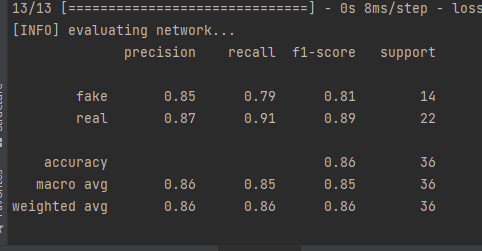
===========================================================================
最后一步是组合所有部分:
-
我们将访问我们的网络摄像头/视频流
-
对每一帧应用人脸检测
-
对于检测到的每个人脸,应用我们的活体检测器模型
打开 liveness_demo.py 并插入以下代码:
import the necessary packages
from imutils.video import VideoStream
from tensorflow.keras.preprocessing.image import img_to_array
from tensorflow.keras.models import load_model
import numpy as np
import argparse
import imutils
import pickle
import time
import cv2
import os
construct the argument parser and parse the arguments
ap = argparse.ArgumentParser()
ap.add_argument(“-m”, “–model”, type=str, required=True,
help=“path to trained model”)
ap.add_argument(“-l”, “–le”, type=str, required=True,
help=“path to label encoder”)
ap.add_argument(“-d”, “–detector”, type=str, required=True,
help=“path to OpenCV’s deep learning face detector”)
ap.add_argument(“-c”, “–confidence”, type=float, default=0.5,
help=“minimum probability to filter weak detections”)
args = vars(ap.parse_args())
导入我们需要的包。 值得注意的是,我们将使用 -
-
VideoStream 以访问我们的相机提要。
-
img_to_array 以便我们的框架采用兼容的数组格式。
-
load_model 加载我们序列化的 Keras 模型。
-
imutils 的便利功能。
-
cv2 用于我们的 OpenCV 绑定。
让我们解析我们的命令行参数:
-
–model :我们用于活体检测的预训练 Keras 模型的路径。
-
–le :我们到标签编码器的路径。
-
–detector :OpenCV 的深度学习人脸检测器的路径,用于查找人脸 ROI。
-
–confidence :过滤掉弱检测的最小概率阈值。
现在让我们继续初始化人脸检测器、LivenessNet 模型 + 标签编码器和我们的视频流:
load our serialized face detector from disk
print(“[INFO] loading face detector…”)
protoPath = os.path.sep.join([args[“detector”], “deploy.prototxt”])
modelPath = os.path.sep.join([args[“detector”],
“res10_300x300_ssd_iter_140000.caffemodel”])
net = cv2.dnn.readNetFromCaffe(protoPath, modelPath)
load the liveness detector model and label encoder from disk
print(“[INFO] loading liveness detector…”)
model = load_model(args[“model”])
le = pickle.loads(open(args[“le”], “rb”).read())
initialize the video stream and allow the camera sensor to warmup
print(“[INFO] starting video stream…”)
vs = VideoStream(src=0).start()
time.sleep(2.0)
OpenCV 加载人脸检测器通。
从那里我们加载我们的序列化、预训练模型 (LivenessNet) 和标签编码器。 我们的 VideoStream 对象被实例化,我们的相机被允许预热两秒钟。 在这一点上,是时候开始遍历帧来检测真人脸与假人脸/欺骗人脸了:
loop over the frames from the video stream
while True:
grab the frame from the threaded video stream and resize it
to have a maximum width of 600 pixels
frame = vs.read()
frame = imutils.resize(frame, width=600)
grab the frame dimensions and convert it to a blob
(h, w) = frame.shape[:2]
blob = cv2.dnn.blobFromImage(cv2.resize(frame, (300, 300)), 1.0,
(300, 300), (104.0, 177.0, 123.0))
pass the blob through the network and obtain the detections and
predictions
net.setInput(blob)
detections = net.forward()
打开一个无限 while 循环块,我们从捕获和调整单个帧的大小开始。
调整大小后,会抓取框架的尺寸,以便我们稍后执行缩放。 使用 OpenCV 的 blobFromImage 函数,我们生成一个 blob,然后通过将其传递到人脸检测器网络来继续执行推理。
现在我们准备好迎接有趣的部分——使用 OpenCV 和深度学习进行活体检测:
loop over the detections
for i in range(0, detections.shape[2]):
extract the confidence (i.e., probability) associated with the
prediction
confidence = detections[0, 0, i, 2]
filter out weak detections
if confidence > args[“confidence”]:
compute the (x, y)-coordinates of the bounding box for
the face and extract the face ROI
box = detections[0, 0, i, 3:7] * np.array([w, h, w, h])
(startX, startY, endX, endY) = box.astype(“int”)
ensure the detected bounding box does fall outside the
dimensions of the frame
startX = max(0, startX)
startY = max(0, startY)
endX = min(w, endX)
endY = min(h, endY)
extract the face ROI and then preproces it in the exact
same manner as our training data
face = frame[startY:endY, startX:endX]
face = cv2.resize(face, (32, 32))
face = face.astype(“float”) / 255.0
face = img_to_array(face)
face = np.expand_dims(face, axis=0)
pass the face ROI through the trained liveness detector
model to determine if the face is “real” or “fake”
preds = model.predict(face)[0]
j = np.argmax(preds)
label = le.classes_[j]
draw the label and bounding box on the frame
label = “{}: {:.4f}”.format(label, preds[j])
cv2.putText(frame, label, (startX, startY - 10),
cv2.FONT_HERSHEY_SIMPLEX, 0.5, (0, 0, 255), 2)
cv2.rectangle(frame, (startX, startY), (endX, endY),
(0, 0, 255), 2)
遍历人脸检测。 在循环里面:
-
过滤掉弱检测。
-
提取人脸边界框坐标并确保它们不超出框架的尺寸。
-
提取人脸 ROI 并以与我们的训练数据相同的方式对其进行预处理。
-
使用我们的活体检测器模型来确定面部是“真实的”还是“假的/欺骗的”。
-
接下来是您插入自己的代码以执行人脸识别的地方,但仅限于真实图像。 伪代码类似于 if label == “real”: run_face_reconition() )。
-
最后(对于这个演示),我们在脸部周围绘制标签文本和一个矩形。
让我们显示我们的结果并清理:
show the output frame and wait for a key press
cv2.imshow(“Frame”, frame)
key = cv2.waitKey(1) & 0xFF
if the q key was pressed, break from the loop
if key == ord(“q”):
break
do a bit of cleanup
cv2.destroyAllWindows()
vs.stop()
============================================================================
打开一个终端并执行以下命令:
python liveness_demo.py --model liveness.model --le le.pickle \
一、Python所有方向的学习路线
Python所有方向的技术点做的整理,形成各个领域的知识点汇总,它的用处就在于,你可以按照下面的知识点去找对应的学习资源,保证自己学得较为全面。
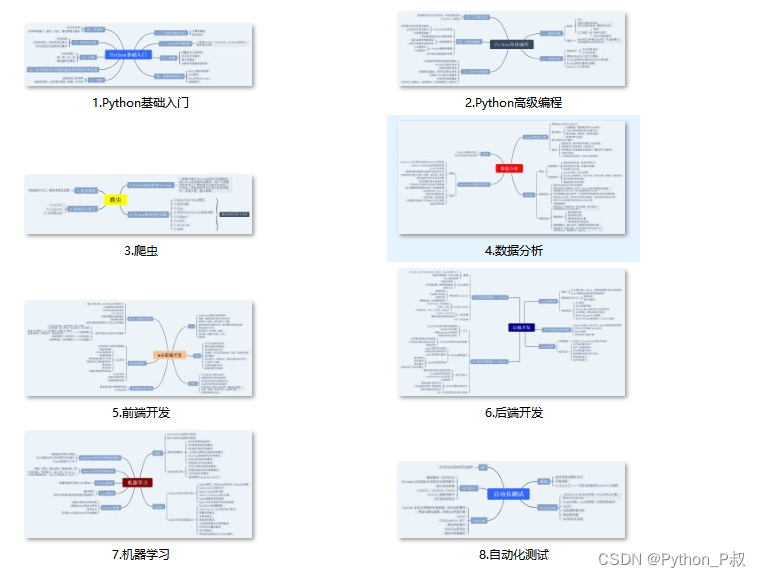
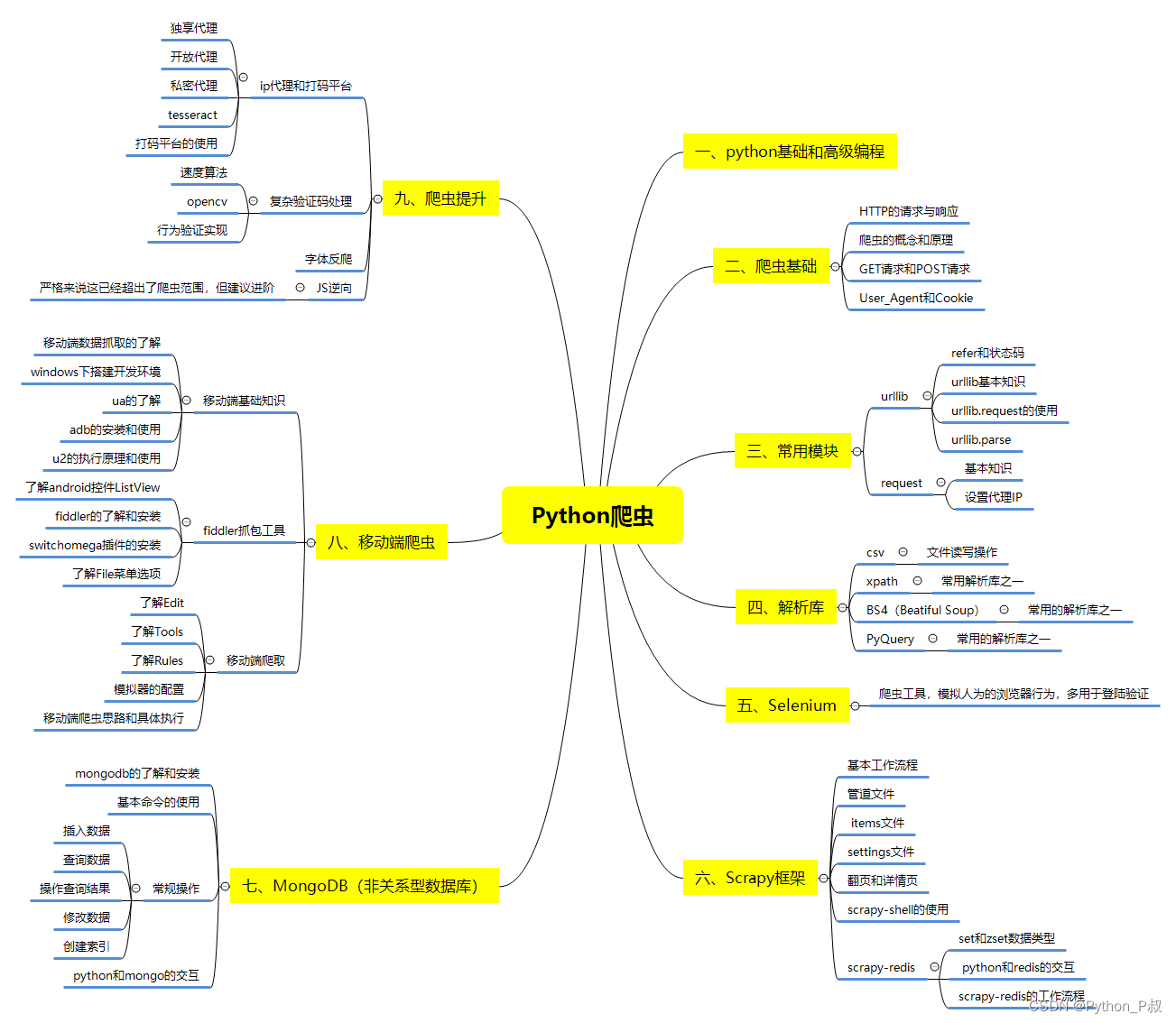
二、Python必备开发工具
工具都帮大家整理好了,安装就可直接上手!
三、最新Python学习笔记
当我学到一定基础,有自己的理解能力的时候,会去阅读一些前辈整理的书籍或者手写的笔记资料,这些笔记详细记载了他们对一些技术点的理解,这些理解是比较独到,可以学到不一样的思路。
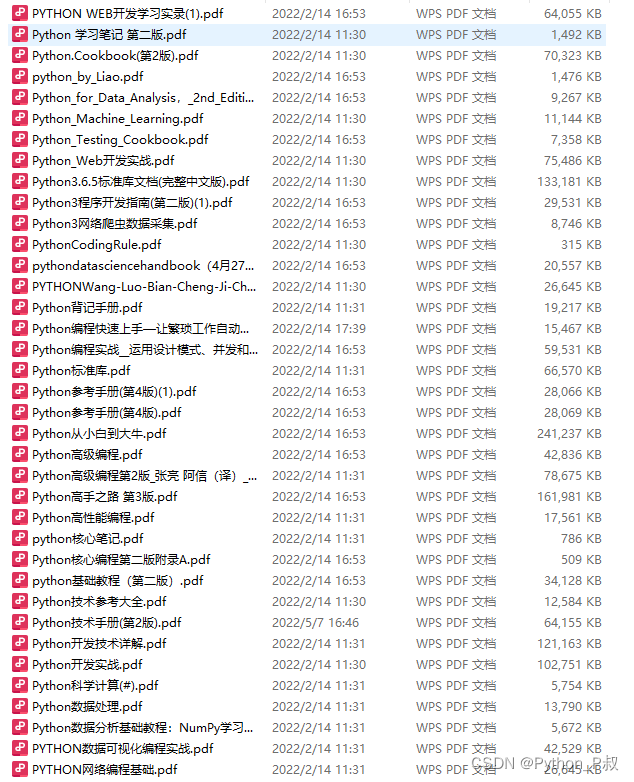
四、Python视频合集
观看全面零基础学习视频,看视频学习是最快捷也是最有效果的方式,跟着视频中老师的思路,从基础到深入,还是很容易入门的。
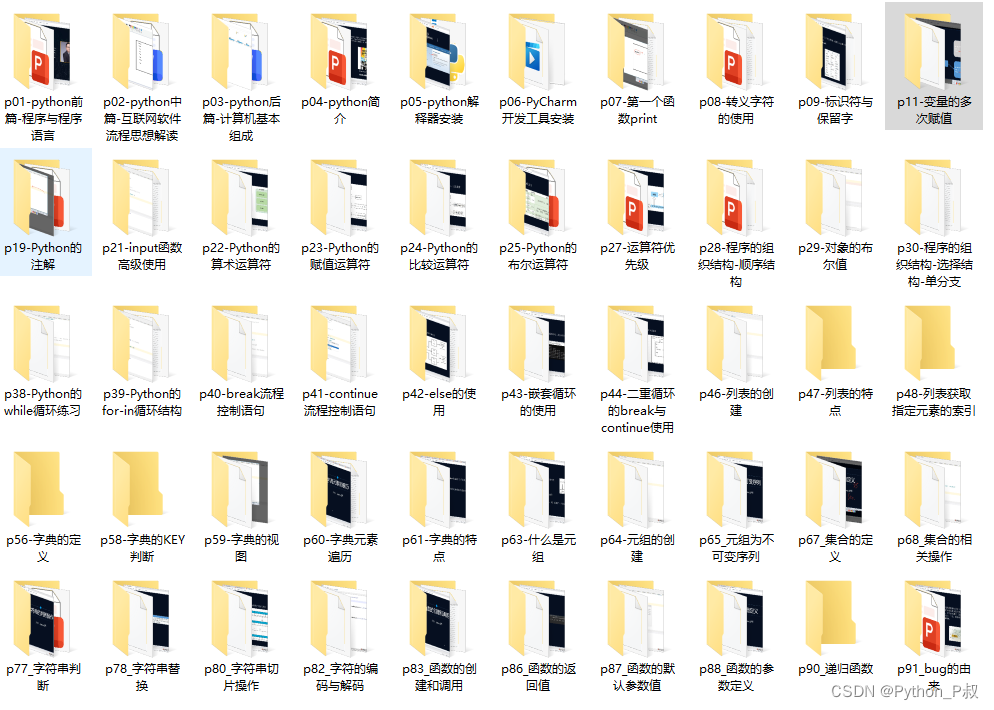
五、实战案例
纸上得来终觉浅,要学会跟着视频一起敲,要动手实操,才能将自己的所学运用到实际当中去,这时候可以搞点实战案例来学习。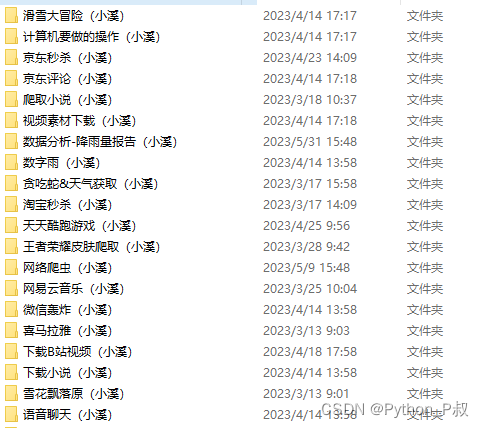
六、面试宝典
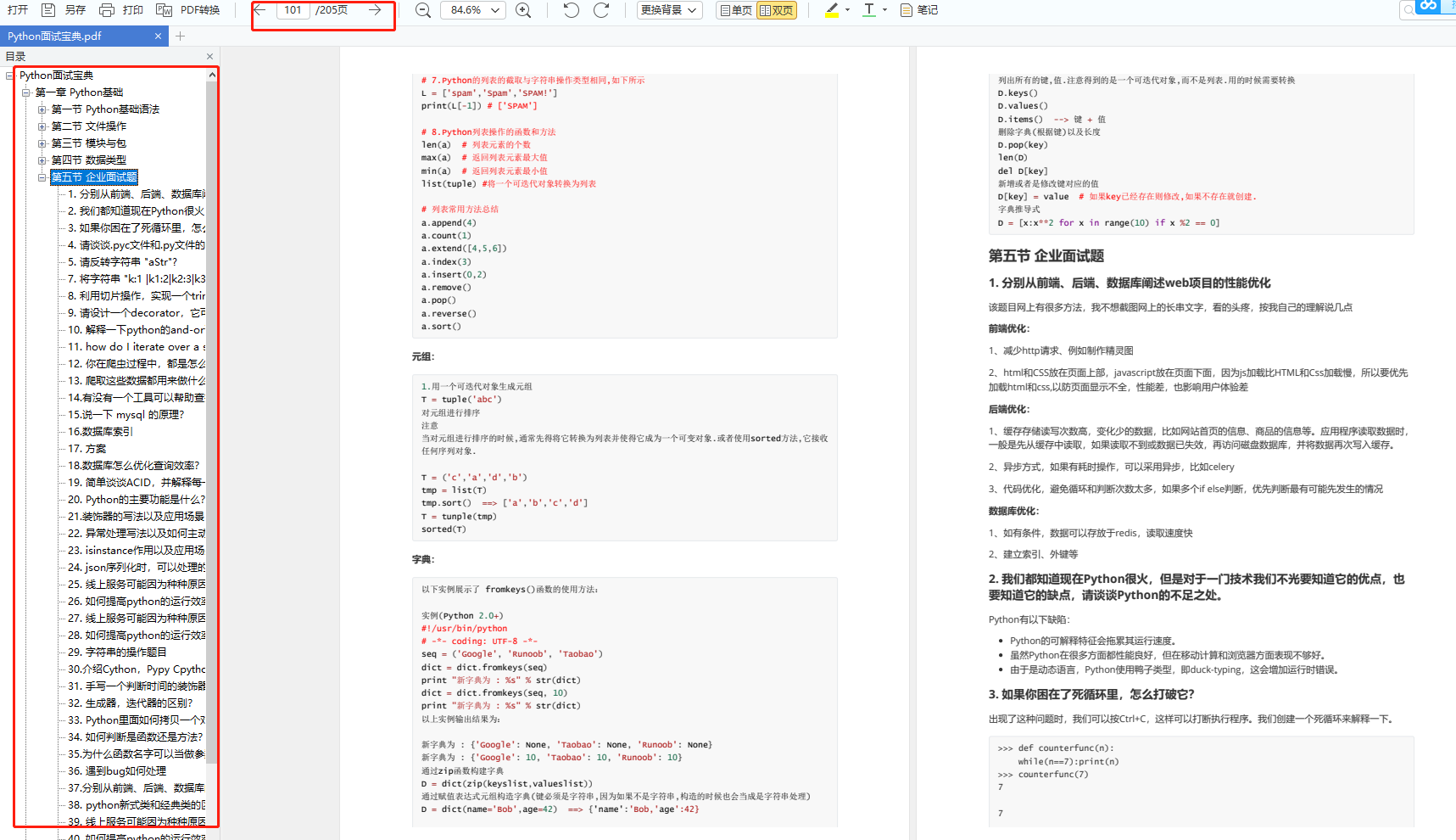
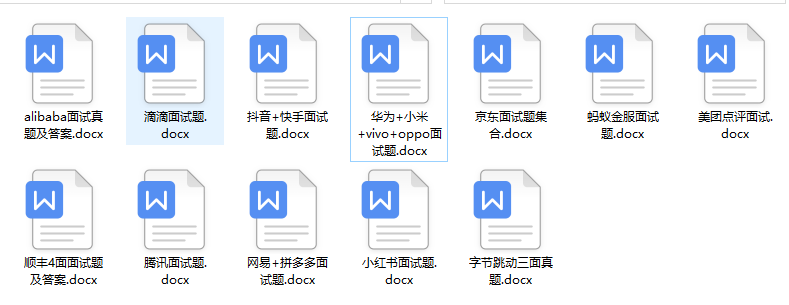
简历模板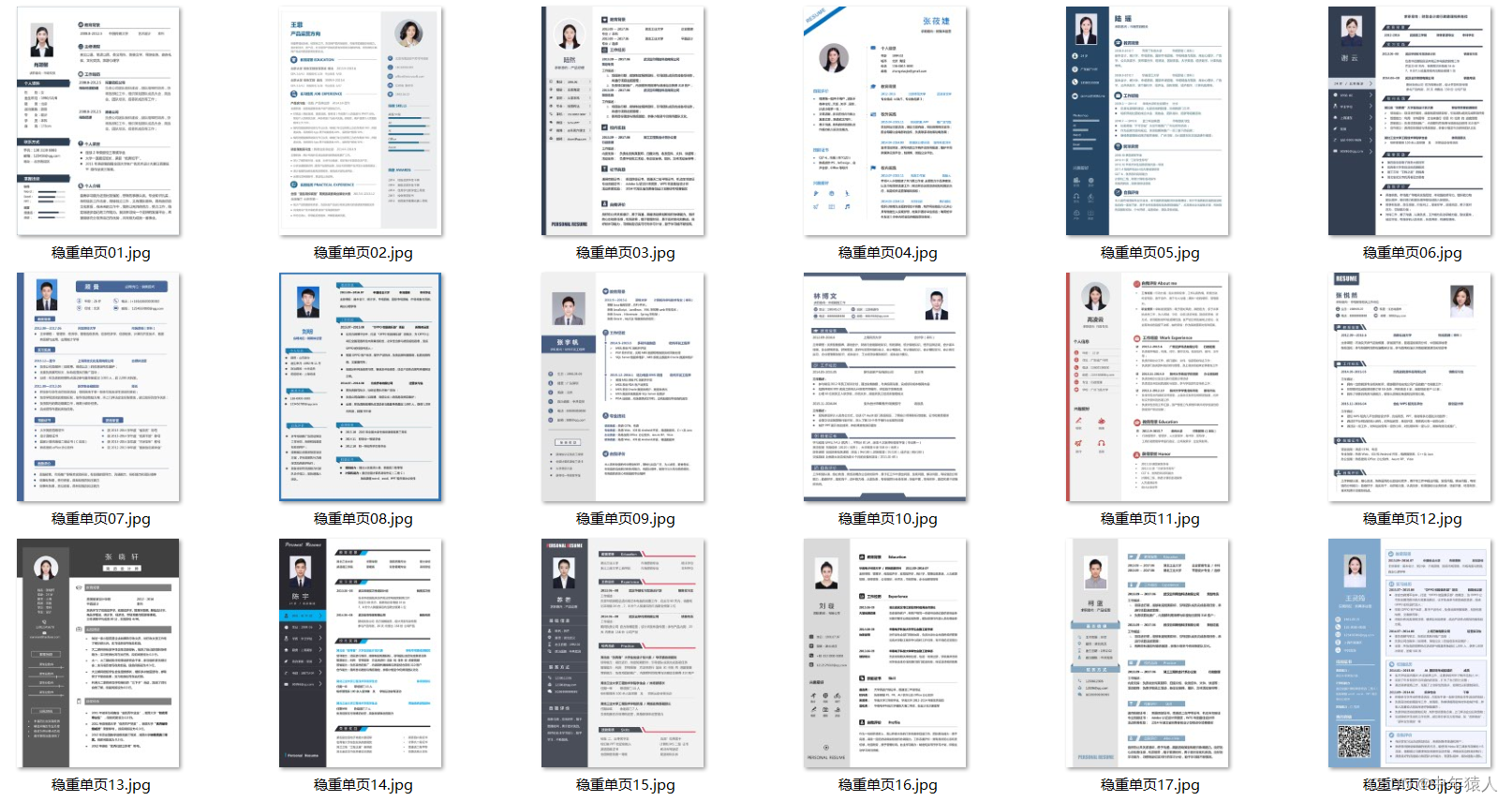
网上学习资料一大堆,但如果学到的知识不成体系,遇到问题时只是浅尝辄止,不再深入研究,那么很难做到真正的技术提升。
如果你需要这些资料,可以添加V无偿获取:hxbc188 (备注666)

一个人可以走的很快,但一群人才能走的更远!不论你是正从事IT行业的老鸟或是对IT行业感兴趣的新人,都欢迎加入我们的的圈子(技术交流、学习资源、职场吐槽、大厂内推、面试辅导),让我们一起学习成长!
(https://img-blog.csdnimg.cn/6d414e9f494742db8bcc3fa312200539.png)
四、Python视频合集
观看全面零基础学习视频,看视频学习是最快捷也是最有效果的方式,跟着视频中老师的思路,从基础到深入,还是很容易入门的。

五、实战案例
纸上得来终觉浅,要学会跟着视频一起敲,要动手实操,才能将自己的所学运用到实际当中去,这时候可以搞点实战案例来学习。
六、面试宝典


简历模板
网上学习资料一大堆,但如果学到的知识不成体系,遇到问题时只是浅尝辄止,不再深入研究,那么很难做到真正的技术提升。
如果你需要这些资料,可以添加V无偿获取:hxbc188 (备注666)
[外链图片转存中…(img-ruUZx8pK-1713858059906)]
一个人可以走的很快,但一群人才能走的更远!不论你是正从事IT行业的老鸟或是对IT行业感兴趣的新人,都欢迎加入我们的的圈子(技术交流、学习资源、职场吐槽、大厂内推、面试辅导),让我们一起学习成长!






















 1623
1623

 被折叠的 条评论
为什么被折叠?
被折叠的 条评论
为什么被折叠?








